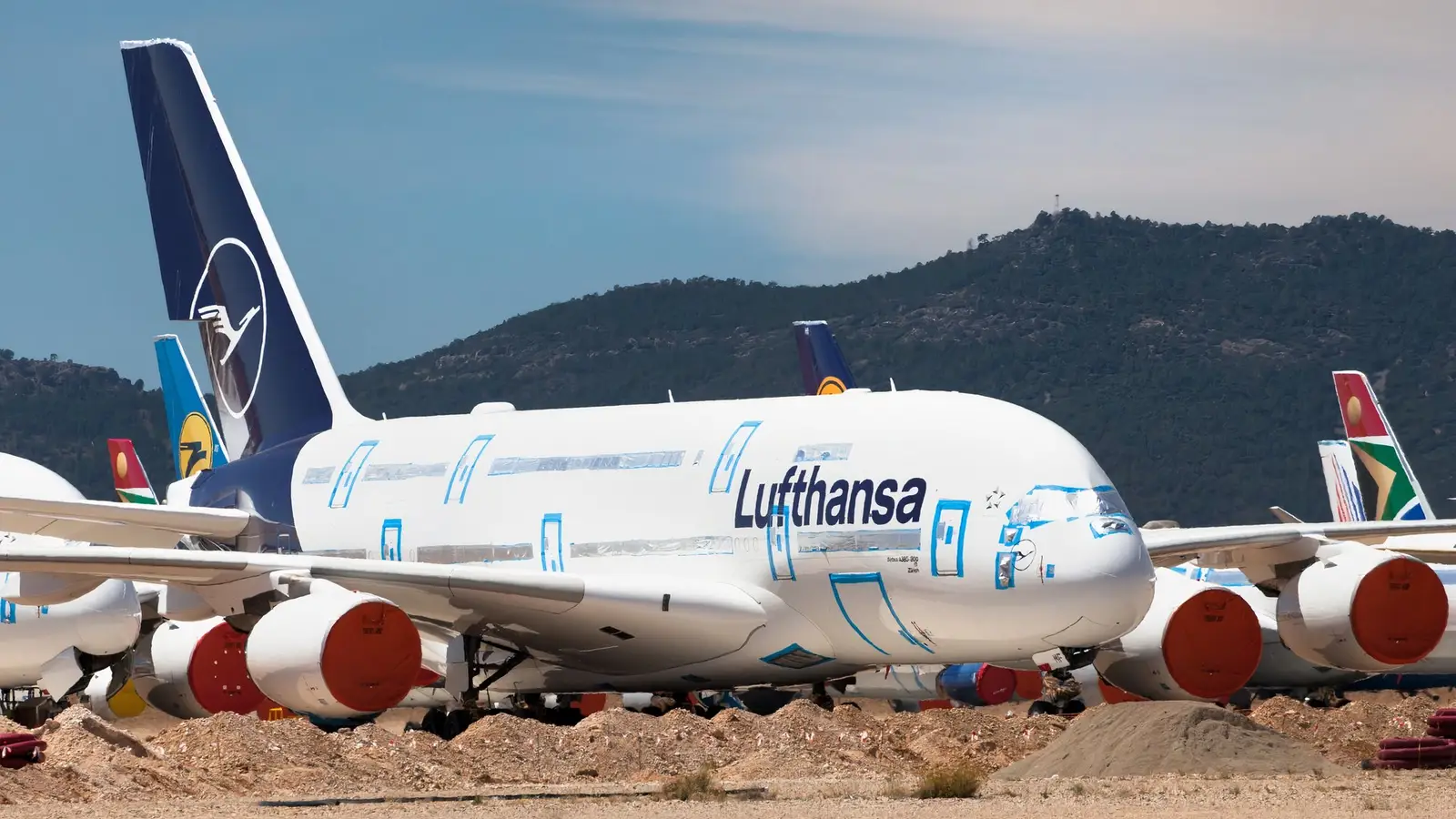
The Airbus A380 is one of the most famous aircraft in aviation history due to its size, engineering, but also lack of sales. Just 251 units were sold for a program that cost roughly $25 billion in development costs, which were not fully recouped by the end of production. Not only that, but the A380 saw Airbus bet big on a future where airlines shifted towards larger airliners rather than focusing on flight frequencies and serving smaller destinations, a bet which failed to pay off.
Emirates was the only airline to truly embrace the A380, but there are certainly some carriers that have found a stable place for the superjumbo. Operators such as British Airways and Singapore Airlines have consistently maintained a relatively small fleet of A380s to serve as their flagships, and many of these aircraft are young with long lives ahead of them. However, fewer than 200 of the 251 A380s delivered are still in active service, so why are A380 operators ditching these planes?
The Failure Of The Airbus A380
The Airbus A380 was Airbus’s response to the Boeing 747. In the 20th century, Airbus and Boeing both developed comprehensive product lines unmatched by any other manufacturer, but the 747 was left unchallenged. As such, Boeing walked away with hundreds of sales throughout the type’s lifetime and ended up selling 1,573 examples by the time production wrapped up in 2023. For Airbus, which was looking to rapidly gain market share, this was unacceptable.
The A380 was going to take of the aspects that distinguished the 747 such as its size and range and amplify them. It was far larger than any 747 variant, more efficient than the jumbo jet, and could fly further. However, while the A380 was more than formidable, the 747’s popularity was mainly due to its unparalleled range, which opened up countless new routes. By the time the A380 entered service, other aircraft like the Boeing 777 also now came with a comparable range.
Larger aircraft with more seats are inherently riskier to deploy, so, in a direct head-on between two otherwise comparable aircraft, the larger one typically needs to have lower per-seat costs to be successful. The A380 had competitive per-seat costs against the 777-300ER, but the two were close enough that the 777 remained popular. Against the Boeing 787, the A380 was ultimately uncompetitive.
The Issue With Flying The Airbus A380
When the A380 first debuted, it was an efficient jet, but this is no longer the case today. With four engines half a generation behind the General Electric GEnx and Rolls-Royce Trent 1000, the A380 is a gas guzzler compared to modern widebodies. These engines are also expensive to maintain, and each A380 comes with a set of four. As such, it’s expensive to fly and expensive to maintain, an issue exacerbated by the small size of most A380 fleets.
Adding to this is the fact that the A380 is a huge aircraft. Airlines often serve a mix of destinations with substantial leisure demand and with high business demand, configuring aircraft in their fleet to appropriately match demand. The A380, however, is such a massive plane that airlines configure these planes with huge numbers of premium seats and massive economy sections. Few destinations can support so much capacity in a single flight.
Former Qantas CEO Alan Joyce once stated that it was cheaper to run two Boeing 787s than a single A380, and former Qatar Airways CEO Al Akbar Baker once called the A380 the carrier’s biggest mistake. As such, on a worldwide level, carriers have often struggled to use the jet efficiently. Explanations for the A380’s lack of market success vary, but the result is always the same: the A380 ended up being an expensive aircraft that was too big for most routes.
Who Has Retired The Airbus A380?
Airbus delivered 251 examples of the A380 to 14 airlines from 2007 to 2021. Air France was the first carrier to fully retire its Airbus A380 fleet in 2020 as a result of the COVID-19 pandemic, but the airline was already falling out of love with the double-decker before then. With the global health crisis causing a worldwide collapse in demand, there was no place in the Air France fleet for an enormous 500+ seater quadjet.
Thai Airways and Malaysia Airlines were two other A380 customers that fully retired their Airbus A380s due to the impacts of the COVID-19 pandemic. Additionally, Hi Fly Malta removed its sole A380 during the pandemic (which was purchased second-hand) and China Southern removed its six Airbus A380s in 2022 due to high fuel costs. In total, five airlines retired 29 A380s, primarily due to the global health crisis.
Of today’s current A380 operators, Singapore Airlines has removed the largest number of A380s from its fleet without fully retiring the type. Initially, it retired five A380s in the late 2010s and replaced them one-for-one with newly-built examples. It would later remove seven examples during the COVID-19 pandemic. Additionally, Emirates, Qantas, Etihad, Lufthansa, Korean Air, and Qatar Airways removed some of their A380s during the global health crisis.
Why Have Five Airlines Retired The A380?
Operating a variety of different airliners comes with various costs, such as pilot training and unique parts. These costs become especially problematic when a given carrier only operates a handful of units. Four out of the five airlines that retired the A380 cited the COVID-19 pandemic as the primary reason for the type’s removal. Given the financial situation that airlines found themselves in during this time, removing a small A380 fleet is a relatively straightforward way to cut costs.
The A380 is mainly used as a flagship aircraft with greater capacity than a 747 or 777 to be deployed on a carrier’s highest-demand, most premium routes. However, one of the reasons behind Air France’s removal of the type, for instance, was the immense costs associated with reconfiguring the double-decker. By the time of their retirement, these planes were flying with Air France’s oldest seats, and refurbishment costs were cited at upwards of $50 million per aircraft.
Other airlines, meanwhile, struggled with the A380 from the beginning. Thai Airways and Malaysia Airlines experienced significant financial difficulties in the 2010s, and as such had difficulties filling their superjumbos due to the size and scope of their networks. China Southern, meanwhile, was the only Chinese carrier to use the A380, but air travel in China is spread out across multiple major cities rather than being concentrated in a single city like many European countries.
Why Have Airlines Downsized Their A380 Fleets?
Singapore Airlines retired part of its A380 fleet during the pandemic to downsize its fleet and remove older examples. However, Qatar Airways, Lufthansa, and Etihad initially removed their entire fleet of A380s during the pandemic to cut costs and remove capacity. This would lead to a more streamlined fleet that was far more efficient in terms of fuel burn and operationally, which would be necessary coming out of the pandemic.
However, worldwide travel demand rose far quicker than anticipated, and although this recovery varied by region, the world had more or less recovered by 2023. However, production of new airliners had not recovered, so many airlines found themselves unable to fully capture demand with their smaller fleets. Solutions included purchasing used aircraft, entering into short-term lease agreements, and, in some cases, returning the A380s to service.
The issues surrounding operating the A380 remain, but airlines have little choice if they want to retain market share. Some airlines have tentatively scheduled the retirement of their superjumbos pending the arrival of their replacements, while others have fully integrated the type in their long-term fleet planning. British Airways has not announced any retirement plans for its A380s, while Qantas has announced that the type will fly until the 2030s.
The Immediate Future Of The A380
Korean Air and Asiana Airlines are currently in the final stages of merging, and as part of the merger, the combined carrier will operate up to 13 A380s. While it’s unclear whether all of these planes will stick around, Korean Air is reported to be pushing back the retirement of the A380 fleet from 2026 to the early 2030s. This also matches the timeline when Qantas intends to replace its A380 fleet with the A350-1000.
Several carriers, such as Qatar Airways, are waiting for deliveries of the long-delayed Boeing 777-9 to begin and facilitate the retirement of the A380s. Lufthansa, meanwhile, will soon retrofit all eight of its A380s with a new business class product, though this will not be with the standard Allegris seats. British Airways will also refurbish its 12-strong A380 fleet with new cabins, which should enter service in 2026.



